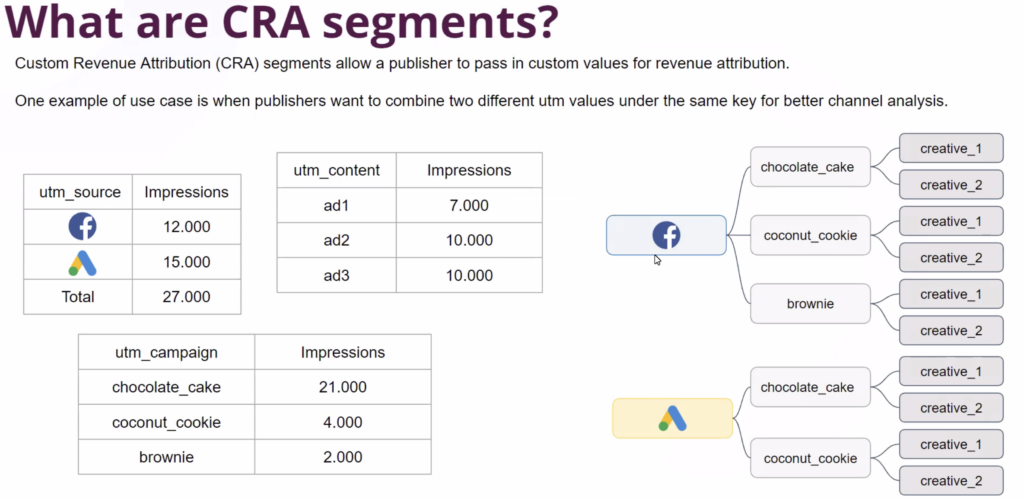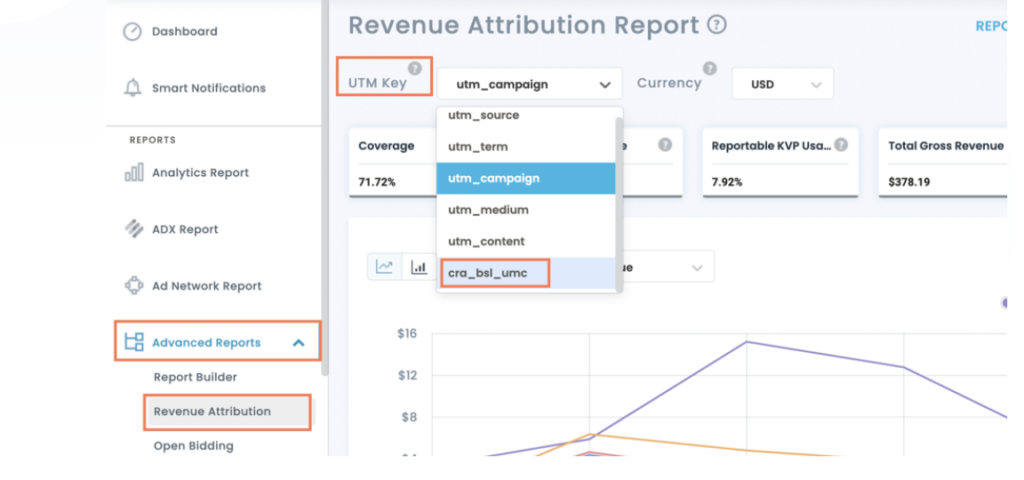What is Average Revenue Per Visitor?
As an online publisher, you are likely continuously looking for ways to improve the business model. The ultimate goal of any online publisher is to maximize the value of every visitor who lands on your website. ARPV is a metric that can help you reach this goal.
The idea behind ARPV is to better understand where your value lies in terms of traffic sources and advertising partners. This metric is the average amount of money that each visitor generates for you in terms of advertising revenue. It gives you insight into the value of each individual traffic source, as well as a way to set goals for future growth based on what types of traffic sources are contributing the most to your overall revenue.
The reason that ARPV is such an effective comparison metric is that it gives us a snapshot of how much revenue we are receiving from each user. The metric can be used at multiple different points in time. For example, if you wanted to compare your average revenue per visitor in Q3 vs. Q4, you would take the number of visits that occurred in Q3 and multiply it by the average revenue per visit in Q3 and then repeat this process with Q4. It’s that simple!
One important thing about ARPV is that it helps eliminate some of the ambiguity present in impressions, CTRs, and click-through rates by clearly defining how companies are defining their ARPVs; from there, they can move forward with taking actionable data in order to better evaluate their traffic sources.
Average Revenue Per Visitor (ARPV): Publisher Perspective
The average revenue per visitor (ARPV) measures the gross revenue generated by the website each time a visitor lands on a page be it through ad clicks, affiliate links, etc. It takes into account the unique visitors your site gets monthly or quarterly.
Visits here don’t equal the number of visitors.
In comparison to ARPU (average revenue per user), average revenue per visitor provides a more comprehensive picture of each visitor’s contribution to the bottom line.
It can also be used at a more granular level within each channel depending on the nature of each campaign and the strength of its traffic source.
When you’re considering which metrics to use when determining ARPV and ARPU, it’s important to remember that they both focus on revenue instead of metrics like impressions or pageviews. This means that both metrics are based on your total revenue, not just the revenue from that particular channel.
How to calculate Average Revenue Per Visitor?
ARPV is calculated using the following formula:
“Average Revenue Per Visitor = Total Revenue / Number of Visitors”
The Average Revenue Per Visitor (ARPV) predicts how profitable the ad campaign is running and which segment of your traffic is the best revenue source. To calculate this metric, divide the total revenue per month by the number of visitors each month.
For example: If you made $300 from 100 visitors, then your ARPV would be $3.0. This predicts how profitable the ad campaign is running, and which segment of visitors generates the most revenue, along with the channel the revenue is coming from. Gross revenue sources include all channels from Affiliate links to blog & newsletter sign ups.
The main reason to calculate your ARPV is to determine who your best customers are (i.e. those who bring in the most revenue). Determining this will help you optimize your marketing and advertising efforts in the future. For example, if you know that people who come from Facebook generate more revenue than those who come from Google AdWords, then you might want to focus on increasing the number of Facebook visitors rather than trying to increase the number of Google AdWords visitors. You can also use this information to see which channels are worth spending more money on and which channels should be given less priority.
ARPV can also provide insight into what types of ads work best for your business. One way to do so is by comparing average monthly expenditures with average monthly revenues, which will tell you whether or not you’re getting a good ROI.
This is why tracking Average Revenue per Visitor matters

If you’re a publisher that runs ad campaigns in your site, you know how important it is to track your Average Revenue Per Visitor (ARPU).
If your ARPU doesn’t match expectations, you can quickly figure out why and make adjustments to increase revenue.
You can also get insights on which ad campaigns are converting and the channels bringing in most of your traffic.
Granular visitor behavior analysis is also possible, allowing you to see what specific portions of your site are driving sales or failing.
This data can help you make future corrections to avoid any discrepancies in the sales funnel and fix any issues that might be preventing conversions.
By reviewing the data from an average revenue per visitor analysis, publishers can make informed decisions that improve their online business. Here’s how:
To get started on your own average revenue per visitor analysis, here are some questions you should answer:
– Which ad campaigns are converting? Are they display ads, affiliate links, blogs, or email marketing campaigns?
– What channels are bringing in the most revenue? Are they social media networks like Facebook or Twitter? Or maybe they’re email marketing campaigns?
– Which pages are bringing in the most revenue? Are they specific types of pages like blog posts or subscription pages? Or possibly landing pages that have been set up specifically to promote a product or service?
– Is our sales funnel successful? Can we see where users are abandoning the process and not making it to checkout all the way?
It is vital for publishers to continuously monitor their ARPVs in order to understand how much they can spend on various channels and what the ROI of their marketing efforts are.
Best ways to boost your Average Revenue Per Visitors

Every publisher wants to know how to increase their average revenue per visitor (ARPV), but it’s not always so easy. Publishers need to think about what types of visitors they want to see, and how they want them to interact with the site. Both factors play a part in boosting ARPV.
An average visit to a publisher’s website lasts for about two minutes, which is a figure that shouldn’t be surprising to anyone who’s ever been on a website. The point is that you need to make your visitors stay as long as possible and convert them into paying customers—and the only way to do that is by offering something that they can’t get elsewhere, at least not easily. You need something that will make you unique and stand out from the crowd of your competitors.
Some of these strategies include:
1- Addons and upgrades
Add-ons or upgrades can entice a visitor to purchase the product by charging a little more. For example, if someone is looking at a $20 shirt on a store website, it could be enticing for that visitor to add another $10 for free shipping or perhaps another $5 for faster delivery time. Adding these extra options can have a positive impact on overall conversion rates and average revenue per visitor.
2- Consistent A/B testing
Another option is A/B testing—testing small variations of your ads in order to determine which ad performs best before going live. This kind of testing can provide you with data that will allow you to create and replicate the winning ad inventory bidding campaign.
3- Rewards & Loyalty Programs
One of the ways to create a unique selling proposition (USP) that makes you stand out from the crowd is by focusing on loyalty programs, such as points and rewards programs. Most readers are used to receiving loyalty points when they shop online, but if you introduce new ways of earning points or offer your readers discounts and other benefits, they will find it more exciting and compelling than just another chance to earn airline miles or get a free drink at Starbucks.
4- Adblock alternatives
The rise in the adoption of ad blocking software has been an alarming trend for site owners, publishers, and advertisers. As the number of online consumers using ad blockers continues to increase, publishers and brands are working to find ways to mitigate their impact on site revenue.
The most common approach is to try and fight ad blocking with more aggressive forms of advertising that are less prone to being blocked (such as interstitial ads or video advertisements that automatically play without sound). However, this means sacrificing user experience in order to improve ad revenue. It’s an easy decision for many publishers, but one that ultimately hurts them in the long run as it drives away readers.
5- Email Marketing
One of the easiest strategies to implement is email campaigns. Based on your customer’s search, you can send them offers that are relevant and help them make the purchase decision. When you target your audience through email marketing, you can even offer lucrative subscriptions to increase your revenue.
Want us to give you tailored revenue attribution reports?
All these tactics can help you boost your ARPVs but its best to leave it to the OG’s to bring you long-term sustainable maximum revenue every quarter.
MonetizMore is a top-rated Google Certified Publisher Partner and can help optimize your ad inventory to maximize your ad revenue! Sign up today!
FAQ
How to Calculate Average Revenue Per Visitor?
To calculate ARPV, you need divide the gross revenue earned by the number of visitors during that time period.
What is RPV?
RPV stands for Revenue Per Visitor (i.e the revenue yielded from each website visitor).
source https://www.monetizemore.com/blog/average-revenue-per-visitor




0 Comments